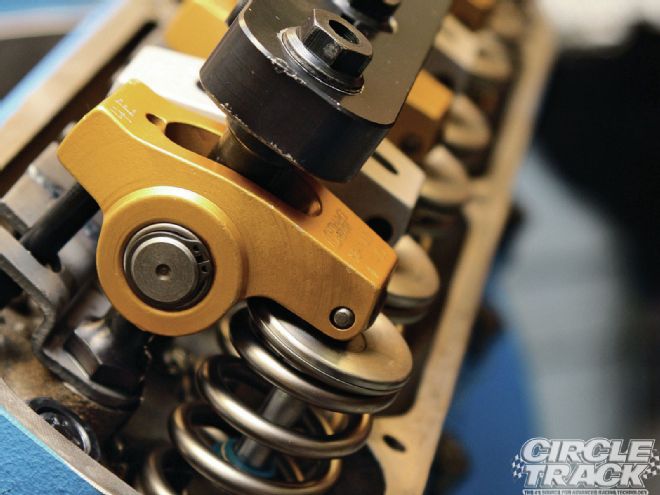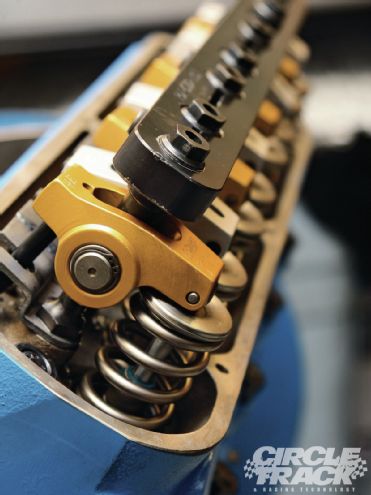
In circle track racing the Late Model Stock classes have a now-classic set of rules that mostly hasn’t changed in more than a dozen years. The heads must come from the manufacturer, typically the Chevrolet Bow Tie 23-degree and Ford N351, and must be iron with no port work besides a three-angle valve job. Valves must be steel and the stock size. The cam has to be a flat tappet solid, the carburetor is a restrictive two-barrel (usually either 350 or 500 cfm), and the intake is an aluminum dual-plane stock-style intake that legally, you aren’t allowed to do anything to beyond dust it off and bolt it up.
 Even with a restrictive two-barrel carburetor, modern Late Model Stock engine packages are delivering 8,000-plus rpms in some situations. Keeping the valvetrain under control at those rpms requires real attention to detail.
Even with a restrictive two-barrel carburetor, modern Late Model Stock engine packages are delivering 8,000-plus rpms in some situations. Keeping the valvetrain under control at those rpms requires real attention to detail.
But the Late Model Stock class is also normally the headliner at asphalt racetracks all across the country. And as such, it draws the most dedicated race teams that put the most effort into winning. So even though the rules package is pretty limiting, competitive engine builders have been finding ways to continually push the engine package to ever higher limits. And the one area with some of the most innovations is the valvetrain. As the camshaft gets more radical, more and more steps have to be taken to help keep the valves under control as well as making sure everything lives.
With the idea of helping racers—no matter the class—gain some insight that may help them improve their own engine program, we spent some time at race engine specialists KT Engine Development to get the latest advancements in Late Model Stock valvetrain technology. Not every idea will work in every situation, but we’re betting there are at least one or two things here that apply to any class you race.